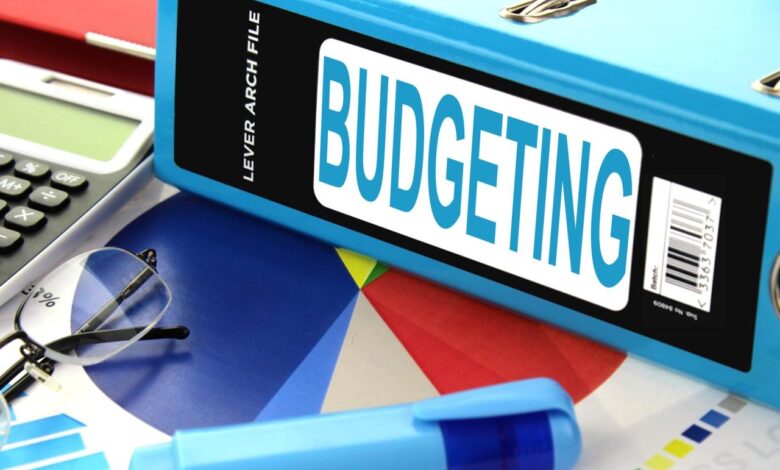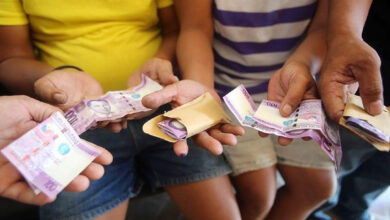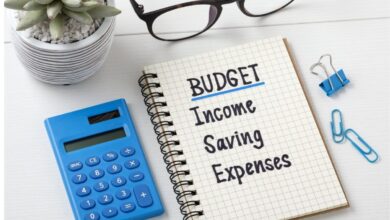Track Spending: Your Path to Financial Freedom

In the modern financial landscape, characterized by the ease of instant digital transactions and the silent automation of recurring bills, the question is no longer if you’re spending money, but where exactly it’s all going.
Many people operate on what’s often called “hope-based budgeting,” simply wishing they have enough money left at the end of the month without ever truly knowing their cash flow dynamics.
This lack of visibility is the single biggest barrier to achieving any significant financial goal, whether it is paying off stubborn high-interest debt, saving for a first home deposit, or finally building that comforting emergency fund.
Tracking your expenses is not merely an administrative chore; it is the foundational diagnostic tool that provides a clear, undeniable picture of your current financial health.
It forces you to confront the often-surprising reality of your habits, moving you beyond vague assumptions and into the realm of concrete data.
By meticulously documenting every transaction, you transform abstract income figures into tangible flows of money, giving you the power to consciously allocate resources instead of watching them disappear passively.
This simple, consistent habit is the key that unlocks financial control, turning frustration and confusion into clarity and confidence, ultimately charting a direct and accelerated course toward financial freedom.
I. Why Expense Tracking is the Financial Starting Line

Before you can create a budget, you must first know your current spending reality. Tracking is the process of gathering this essential data.
A. Exposing the Financial Leaks
Many small, non-essential expenditures, often called “money leaks,” add up significantly over a month. They are the small, daily lattes, the frequent delivery fees, or the impulsive convenience store stops that seem harmless individually.
Only by tracking do you see the cumulative impact of these minor transactions, often revealing that they consume hundreds of dollars monthly.
B. Accurate Budget Foundation
You can’t set realistic limits if you don’t know your baseline. Tracking provides the average historical cost for every category, ensuring your new budget is built on facts, not guesswork.
This historical data prevents you from setting an unrealistically low grocery budget, for instance, which would lead to immediate failure and demotivation.
C. Psychological Accountability
The simple act of recording a purchase makes you stop and think about the transaction. Knowing that you must log the item forces a moment of intentionality, often leading you to pause and reconsider if the purchase is truly necessary.
This immediate feedback loop is a powerful psychological deterrent against mindless spending.
D. Finding the “Forgotten” Subscriptions
In the age of streaming services and software subscriptions, it is incredibly easy to lose track of recurring charges.
Tracking illuminates these automatic debits, often uncovering memberships you forgot you had or those you rarely use, allowing you to quickly cancel them and free up recurring cash flow.
II. The Core Principle: Tracking Everything
Effective expense tracking means being ruthlessly comprehensive. If money left your hands or your account, it must be recorded.
A. Digital Transactions
All debit card purchases, credit card charges, online transfers, and automated bill payments are recorded here. These are the easiest to track because your bank or card provider already maintains a precise digital record.
B. Cash Transactions
Cash is notoriously difficult to track, yet it’s a massive blind spot for many people. You must diligently keep receipts or log the expense immediately upon spending the cash, treating every dollar spent like a detective clue.
C. Inter-Account Transfers
If you move money between your checking account and your savings account, this is a transfer, not an expense. Be careful not to categorize such transfers as spending, as this will artificially inflate your spending totals.
D. Business vs. Personal
For freelancers or small business owners, it’s critical to clearly separate business expenses from personal expenses from the moment of transaction to maintain accurate records for tax purposes and true personal financial clarity.
III. Choosing Your Tracking Methodology

The best tracking method is the one you can maintain consistently over the long haul. Consistency trumps complexity every time.
A. Automatic Digital Aggregation Apps
These applications connect securely to your bank and credit card accounts, automatically downloading and categorizing your transactions. This is the most convenient and least time-consuming method for most people.
- A. Pros: Minimizes manual entry; provides a complete view of all accounts in one place; offers powerful reporting features.
- B. Cons: Requires trusting third-party software with access to your financial data; sometimes auto-categorizes incorrectly, requiring manual review.
B. The Spreadsheet Method (Manual Data Entry)
Using a custom Excel or Google Sheets template gives you maximum control and forces greater awareness because of the manual effort involved. This method is excellent for those who are analytically inclined or enjoy customizing their reports.
- A. Pros: Complete control over categories and calculations; free to use; the manual entry reinforces awareness of every spending decision.
- B. Cons: Time-consuming and requires discipline to input data daily or weekly; prone to human error if receipts are lost or forgotten.
C. The Dedicated Notebook/Journal
For people who prefer to keep their finances off the grid or who love the simplicity of pen and paper, a small notebook serves as a running ledger of expenses.
- A. Pros: Immediate logging opportunity; no dependence on technology; increases transaction awareness through the physical act of writing.
- B. Cons: Difficult to tally and analyze data; can be easy to lose or forget to carry; manual calculation of totals is required.
D. Receipt Collection and Review
This method involves diligently collecting every single receipt and then dedicating time once or twice a week to input all the data into a spreadsheet or app. It is a good hybrid approach to ensure no transaction is missed.
- A. Pros: Guarantees you have the documentation for every spend; less disruption to your day than logging every single transaction immediately.
- B. Cons: Can create clutter; requires a scheduled, consistent block of time for processing; cash transactions without a receipt can be forgotten.
IV. The Art of Categorization
Raw transaction data is useless; it must be organized into meaningful categories to reveal patterns and guide your financial decisions. Consistency in labeling is the key to accurate analysis.
A. Housing Costs
This includes the big fixed costs like rent or mortgage payment, property taxes, homeowner’s insurance, and utilities (electricity, water, gas).
B. Transportation
Cover all costs related to getting around, such as car payments, fuel, maintenance, public transit passes, ride-sharing services, and tolls.
C. Food and Groceries
This is often one of the largest variable expenses and must be split into two distinct categories: Groceries (food prepared at home) and Dining Out (restaurants, delivery, coffee shops). Separating these is crucial for finding areas to cut back.
D. Personal and Discretionary
This category captures the “fun money” and optional spending. It includes entertainment, hobbies, clothing, personal care, and non-essential shopping. This is the first place you look for cuts when the budget is tight.
E. Debt Payments
All minimum payments on credit cards, personal loans, and student loans go here. Note: Extra principal payments (above the minimum) are sometimes tracked separately to motivate debt freedom.
F. Savings and Investments
While technically not an “expense,” tracking your contributions to your Emergency Fund, Retirement Accounts (401k/IRA), and brokerage accounts is vital to ensure you “pay yourself first.”
G. Insurance and Healthcare
Include health insurance premiums, dental, vision, life insurance, and out-of-pocket medical expenses like co-pays and prescriptions.
H. Miscellaneous and Irregular
A catch-all for transactions that don’t fit neatly elsewhere, such as bank fees, random home repairs, or gifts. Try to keep the spending in this category low, or else it becomes a “junk drawer” for ignored overspending.
V. Analyzing the Data: Turning Information into Power
Once you have 30 to 90 days of categorized spending data, it’s time to review and analyze. This is where tracking transitions into budgeting.
A. Calculate Averages
Determine the average monthly spend for each category. This average is your true baseline; if you spent $600 on Groceries in one month and $400 in another, your realistic budget target should be around $500.
B. Identify Discretionary Spending
Focus on the Discretionary and Dining Out categories. These are typically the areas where a significant portion of your income is leaking away without adding much to your long-term happiness or financial stability.
C. Find the “Aha!” Moments
Look for transactions that genuinely surprise you. Did you realize you spent $150 on fast food when you thought it was only $50? Did you uncover three streaming services you never use? These discoveries are your immediate opportunitiesfor savings.
D. Look for Trends
Are your transportation costs steadily rising due to increased travel? Are your utility bills spiking in the winter? Trends help you anticipate future needs and adjust your savings contributions accordingly.
VI. The Monthly Review Ritual
Effective tracking culminates in a consistent monthly financial review. This review is the single most important habit for maintaining financial control.
A. Schedule Dedicated Time
Book a non-negotiable hour on your calendar, preferably shortly after the last day of the month, to review your statements and categorize any pending transactions.
B. Compare Against Goals
Don’t just look at the numbers; measure them against your financial goals. Did you hit your savings target? Did you keep your dining-out spending within the new limit?
C. The “Zero-Sum” Check
If you are using a zero-based budgeting philosophy, ensure that your total income minus all expenses (including savings contributions) equals zero. This ensures every dollar has been accounted for.
D. Adjust the Next Month’s Plan
Use the past month’s reality to inform the next month’s budget. If you failed to stay within the Dining Out limit, either commit to more discipline or increase the budget for that category and reduce another, less important one. The budget must be a flexible reflection of your life.
VII. Integrating Tracking with Financial Goals
Tracking isn’t just about knowing the past; it’s about funding the future. Every tracked dollar is a vote for the life you want to live.
A. Fund Your Emergency Savings
By identifying areas of overspending through tracking, you instantly free up cash that can be directed straight into your Emergency Fund, accelerating your progress toward having three to six months of living expenses saved.
B. Accelerate Debt Repayment
The money saved from cutting unnecessary expenses (like cancelling unused subscriptions or cooking at home more) can be immediately applied as extra principal payments on high-interest debt, saving you thousands in interest and years of repayment time.
C. Boost Investment Contributions
Once your emergency fund is built, the surplus cash from a well-tracked budget should be directed to your investment accounts (like retirement funds or brokerage accounts) to maximize compounding growth.
D. Save for Sinking Funds
Tracking helps you identify the exact monthly amount needed to save for irregular expenses like holidays, car registration, or a vacation, ensuring those large, non-monthly bills never cause a budget crisis.
Conclusion
The habit of meticulously tracking every expenditure is the genuine core of personal finance. It transforms abstract desires for wealth into concrete, measurable actions you take daily.
This practice provides the essential data necessary to build a budget that actually works for your unique life. By consistently monitoring your cash flow, you take back control from the invisible forces of impulse and automation.
The small effort required for tracking grants you the immense power of informed decision-making over your own money.
Ultimately, tracking expenses is the most direct way to eliminate financial stress and secure your long-term prosperity. It is an act of deep financial self-respect and the surest path to achieving absolute financial confidence.




